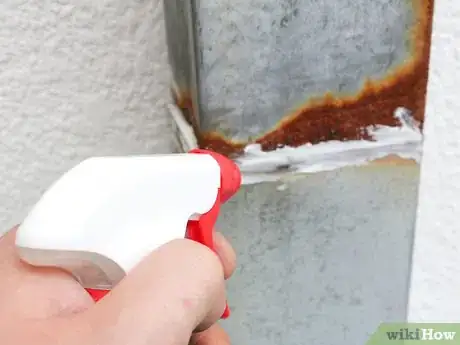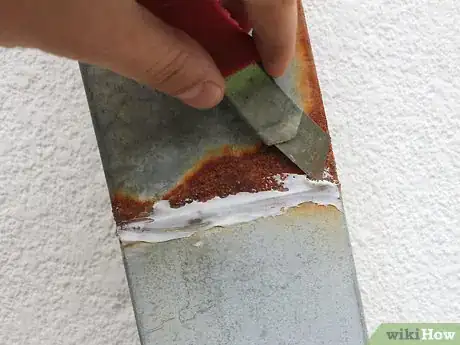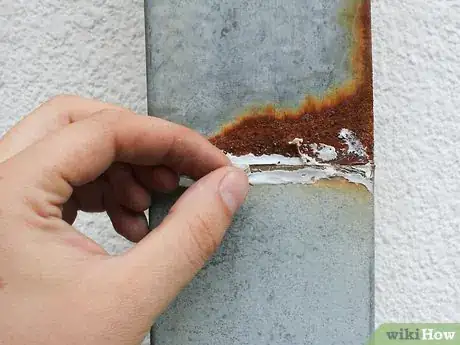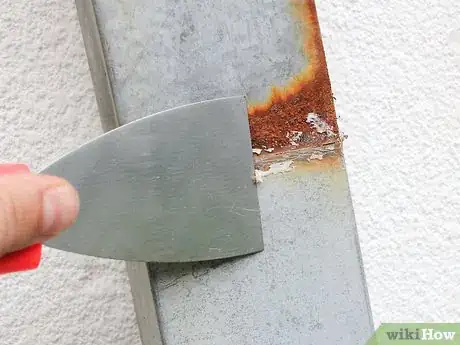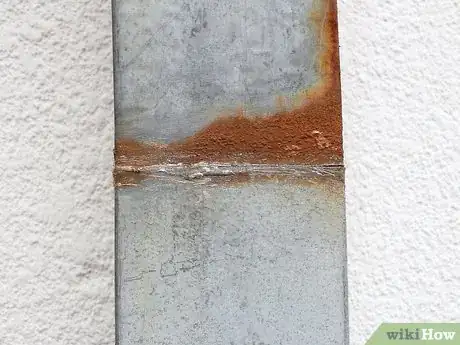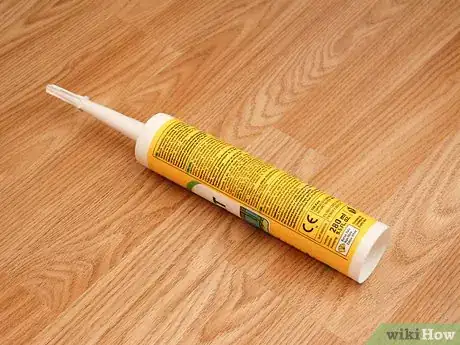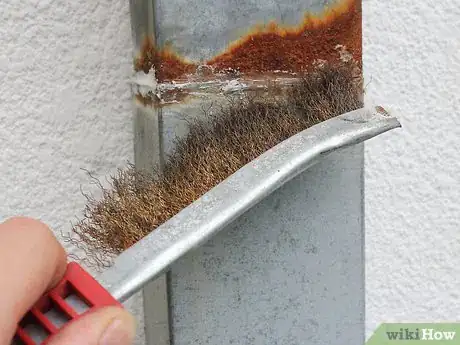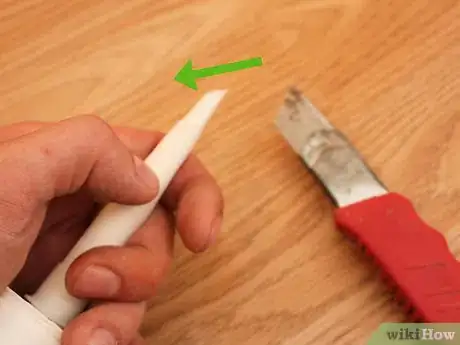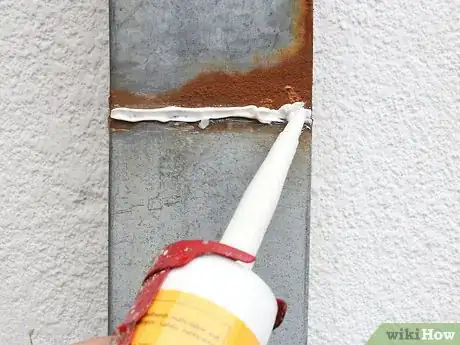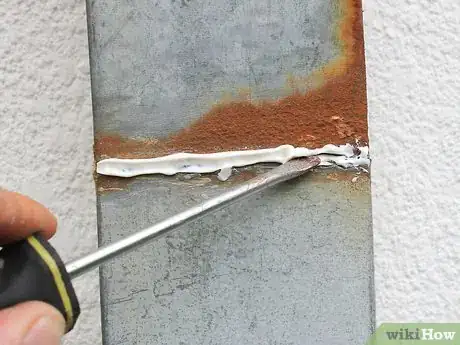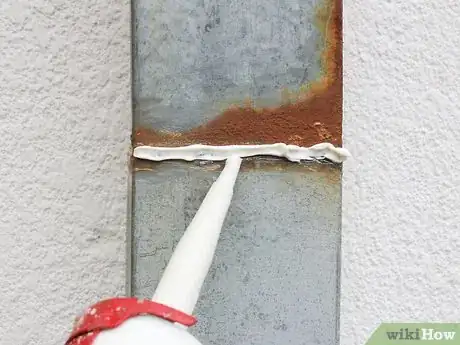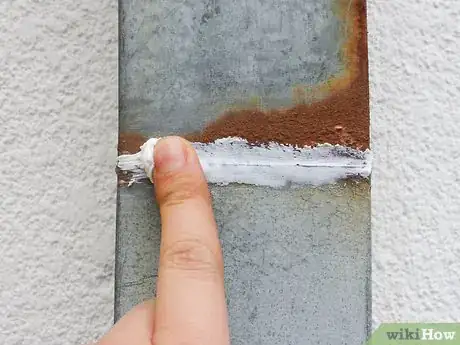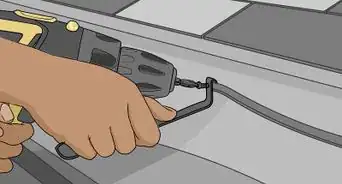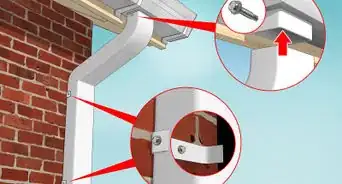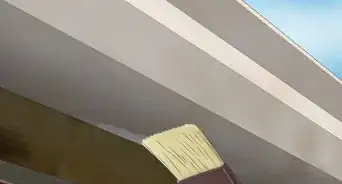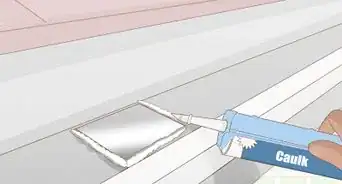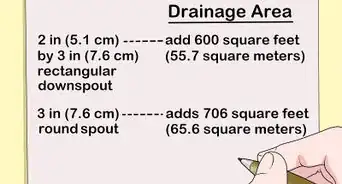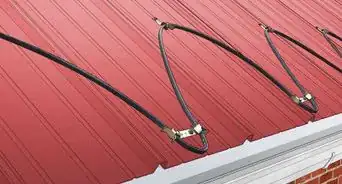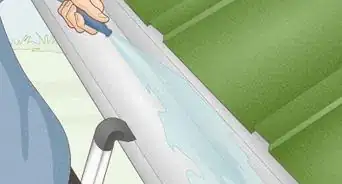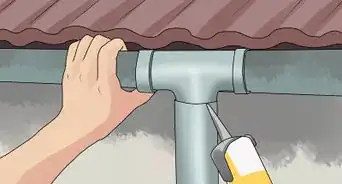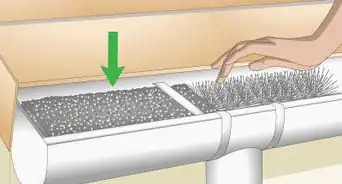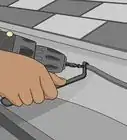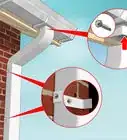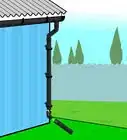This article was co-authored by Ryaan Tuttle. Ryaan Tuttle is a Home Improvement Specialist and the CEO of Best Handyman, Inc. in Boston, Massachusetts. With over 17 years of experience, he specializes in building home service businesses, focusing on creating scalable and efficient brands. With the help of his global team, the companies have achieved over 10+ million in sales and received recognition through magazine features, and enjoy partnerships with wikiHow and Jobber field service software. Boston Magazine and LocalBest.com have named Best Handyman Boston the Best Handyman in Boston. Ryaan holds Construction Supervisor and Home Improvement Contractor Licenses.
There are 9 references cited in this article, which can be found at the bottom of the page.
This article has been viewed 64,100 times.
Caulk is a necessary part of gutter maintenance. The seams of your rain gutters can rust if left unprotected and fungi can begin to grow in the seams if rotted leaves or other organic matter gets caught in the cracks. Professionally installed gutters should have been caulked already, but caulk will need to be replaced every decade or so.
Steps
Remove Old Caulk
-
1Apply a caulk remover. Caulk removers are special chemical products designed to moisten and soften the caulk, making it easier to remove so that you do not need to chip and chisel it away.[1]
-
2Slice the caulk with a blade. Use a clean blade on a utility knife to slice down the center of the softened caulk. Most of the caulk should be freed.[2]Advertisement
-
3Pull away the caulk. You might be able to pull it away by hand, but since gutter caulk can be thick, you may need to grip onto it using needle-nose pliers. Either way, most of the old caulk should come up.
-
4Chip away remaining caulk. Use small chisel or the hook end of a painter's five-in-one tool to rake away any leftover chunks until the area is completely clean.[3]
-
5Clean the area. Scrub it with a toothbrush or abrasive sponge dipped into a non-ammonia cleaner. Follow by scrubbing the area with a solution made with 1/3 cup (80 ml) bleach and 1 gallon (4 liters) of water. Cleaning the area will remove any fungi or decayed leaves that may have worked their way into the cracking caulk.
-
6Let the area dry. Before applying new caulk, the area should be completely dry. Allowing the area to air dry is best, but if rain, other precipitation, or humidity threatens to create a problem, dry it out by hand using a clean, dry towel.[4]
Apply New Caulk
-
1Use a silicone caulk. Silicone caulk maintains its integrity in sunlight and extreme temperatures better than latex caulk and it also lasts longer under most circumstances.[5] Moreover, silicone caulk also works better in gaps that expand and contract, which gutters often do in response to changes in temperature. If you have white gutters, use a white caulk. If your gutters are painted in another color, choose a clear caulk.[6]
- If possible, go with a caulk that is specifically formulated for gutters. Gutter caulks are designed to work in the conditions gutters face, and as such, they last much longer than non-gutter caulks.
- Don't use caulk that's labeled for interior use, like your kitchen or bathroom.[7]
-
2Roughen the surface. Rub the edge of the seam with sandpaper or a wire brush using steady, even pressure. Caulk, especially silicone caulk, adheres better to a surface that is slightly rough and uneven than it does to a perfectly smooth surface. The gutters do not need to be jagged, but it helps if the metal is a little coarse.
-
3Cut the tip of the caulk tube at an angle. Do not cut the tip off straight across. Cutting the tip at an angle makes it easier to fit the tube into the seam.[8]
-
4Fix the caulk tube into a caulk gun. The tube should be fitted securely at both ends of the gun.
-
5Apply the caulk in a straight, small bead across the seam. Start at the front of the seam and gradually pull the trigger of the caulking gun. As you squeeze, a small dot of caulk should emerge from the nozzle. Drag the nozzle down the length of the seam, applying even pressure on the trigger to maintain the same size dot along the entire seam.[9]
- Apply the caulk along the gap between the gutter and facia board. This way, when water runs onto the facia board from the roof, it won't drip behind the gutter.[10]
-
6Push the caulk into the joint with a screwdriver. After you have applied the caulk, work it under the joint with the tip of a screwdriver. By working it into the joint, you ensure a stronger seal.
-
7Apply another line of caulk. Draw a second line of caulk above the first using the same method and amount of pressure as you used to create the first. Do not push this line under the joint.[11]
-
8Smooth the caulk with your finger. Use your finger to smooth the beaded line into a smooth strip of caulk. The width should be even throughout the entire line.
-
9Allow the caulk to dry. After it has dried, check your work to verify that the caulk is secured.[12]
Expert Q&A
-
QuestionWhat is the best caulk for gutters?
 Ryaan TuttleRyaan Tuttle is a Home Improvement Specialist and the CEO of Best Handyman, Inc. in Boston, Massachusetts. With over 17 years of experience, he specializes in building home service businesses, focusing on creating scalable and efficient brands. With the help of his global team, the companies have achieved over 10+ million in sales and received recognition through magazine features, and enjoy partnerships with wikiHow and Jobber field service software. Boston Magazine and LocalBest.com have named Best Handyman Boston the Best Handyman in Boston. Ryaan holds Construction Supervisor and Home Improvement Contractor Licenses.
Ryaan TuttleRyaan Tuttle is a Home Improvement Specialist and the CEO of Best Handyman, Inc. in Boston, Massachusetts. With over 17 years of experience, he specializes in building home service businesses, focusing on creating scalable and efficient brands. With the help of his global team, the companies have achieved over 10+ million in sales and received recognition through magazine features, and enjoy partnerships with wikiHow and Jobber field service software. Boston Magazine and LocalBest.com have named Best Handyman Boston the Best Handyman in Boston. Ryaan holds Construction Supervisor and Home Improvement Contractor Licenses.
Home Improvement Specialist Exterior-rated, 100% silicone caulk is definitely the best caulk for your gutters. Try not to use kitchen or bathroom caulk outside, since it's not designed for outdoor use.
Exterior-rated, 100% silicone caulk is definitely the best caulk for your gutters. Try not to use kitchen or bathroom caulk outside, since it's not designed for outdoor use. -
QuestionWhy should I caulk between gutter and fascia?
 Ryaan TuttleRyaan Tuttle is a Home Improvement Specialist and the CEO of Best Handyman, Inc. in Boston, Massachusetts. With over 17 years of experience, he specializes in building home service businesses, focusing on creating scalable and efficient brands. With the help of his global team, the companies have achieved over 10+ million in sales and received recognition through magazine features, and enjoy partnerships with wikiHow and Jobber field service software. Boston Magazine and LocalBest.com have named Best Handyman Boston the Best Handyman in Boston. Ryaan holds Construction Supervisor and Home Improvement Contractor Licenses.
Ryaan TuttleRyaan Tuttle is a Home Improvement Specialist and the CEO of Best Handyman, Inc. in Boston, Massachusetts. With over 17 years of experience, he specializes in building home service businesses, focusing on creating scalable and efficient brands. With the help of his global team, the companies have achieved over 10+ million in sales and received recognition through magazine features, and enjoy partnerships with wikiHow and Jobber field service software. Boston Magazine and LocalBest.com have named Best Handyman Boston the Best Handyman in Boston. Ryaan holds Construction Supervisor and Home Improvement Contractor Licenses.
Home Improvement Specialist When water runs onto the fascia from the roof, a line of caulk prevents it from going behind the gutter.
When water runs onto the fascia from the roof, a line of caulk prevents it from going behind the gutter. -
QuestionDoes temperature affect caulking?
 DonaganTop AnswererModern outdoor caulking is theoretically unaffected by temperature. Well-known brands are pretty reliable.
DonaganTop AnswererModern outdoor caulking is theoretically unaffected by temperature. Well-known brands are pretty reliable.
Things You’ll Need
- Caulk remover
- Utility knife
- Needle-nose pliers
- Painter's five-in-one tool
- Non-ammoniated cleaner
- Bleach
- Toothbrush or abrasive sponge
- Towel
- Silicone caulk
- Sandpaper or wire brush
- Caulk gun
- Screwdriver
References
- ↑ https://www.popularmechanics.com/home/interior-projects/a1448/how-to-remove-caulk/
- ↑ https://www.youtube.com/watch?v=hg2FfE7gpXM
- ↑ https://www.epa.gov/pcbs/summary-tools-and-methods-caulk-removal
- ↑ https://www.bobvila.com/articles/how-to-remove-caulk/
- ↑ Ryaan Tuttle. Home Improvement Specialist. Expert Interview. 30 July 2021.
- ↑ https://www.thisoldhouse.com/ideas/laying-down-perfect-bead
- ↑ Ryaan Tuttle. Home Improvement Specialist. Expert Interview. 30 July 2021.
- ↑ https://www.angieslist.com/articles/how-apply-caulk.htm
- ↑ https://www.angieslist.com/articles/how-apply-caulk.htm
- ↑ Ryaan Tuttle. Home Improvement Specialist. Expert Interview. 30 July 2021.
- ↑ https://www.lowes.com/n/how-to/how-to-caulk
- ↑ https://www.energy.gov/energysaver/services/do-it-yourself-energy-savings-projects/savings-project-how-seal-air-leaks-caulk
